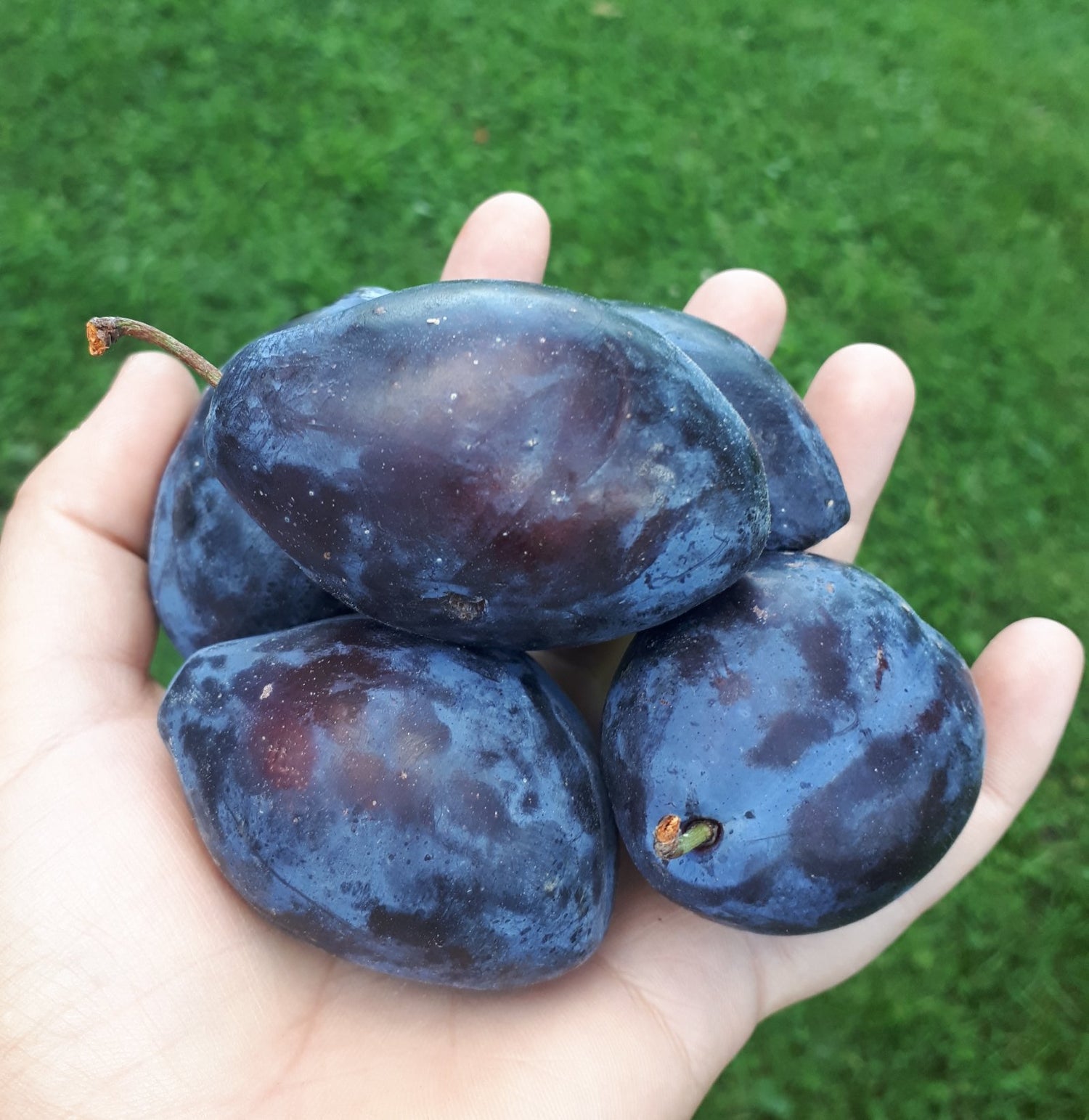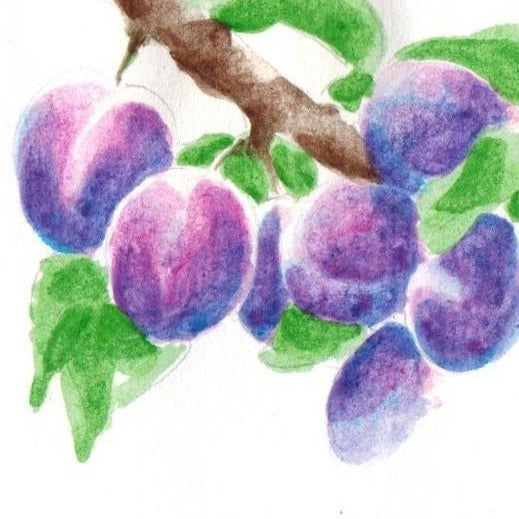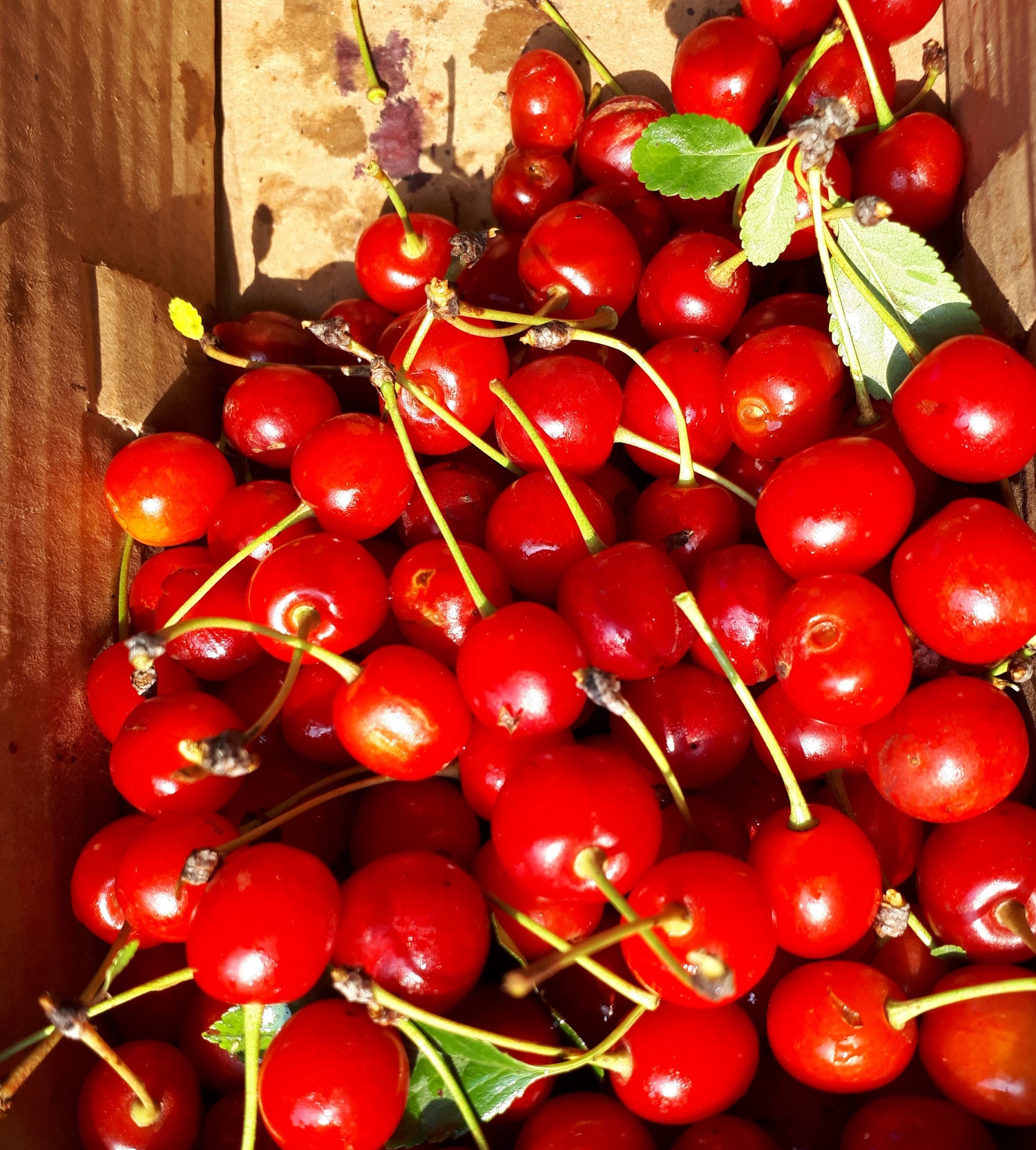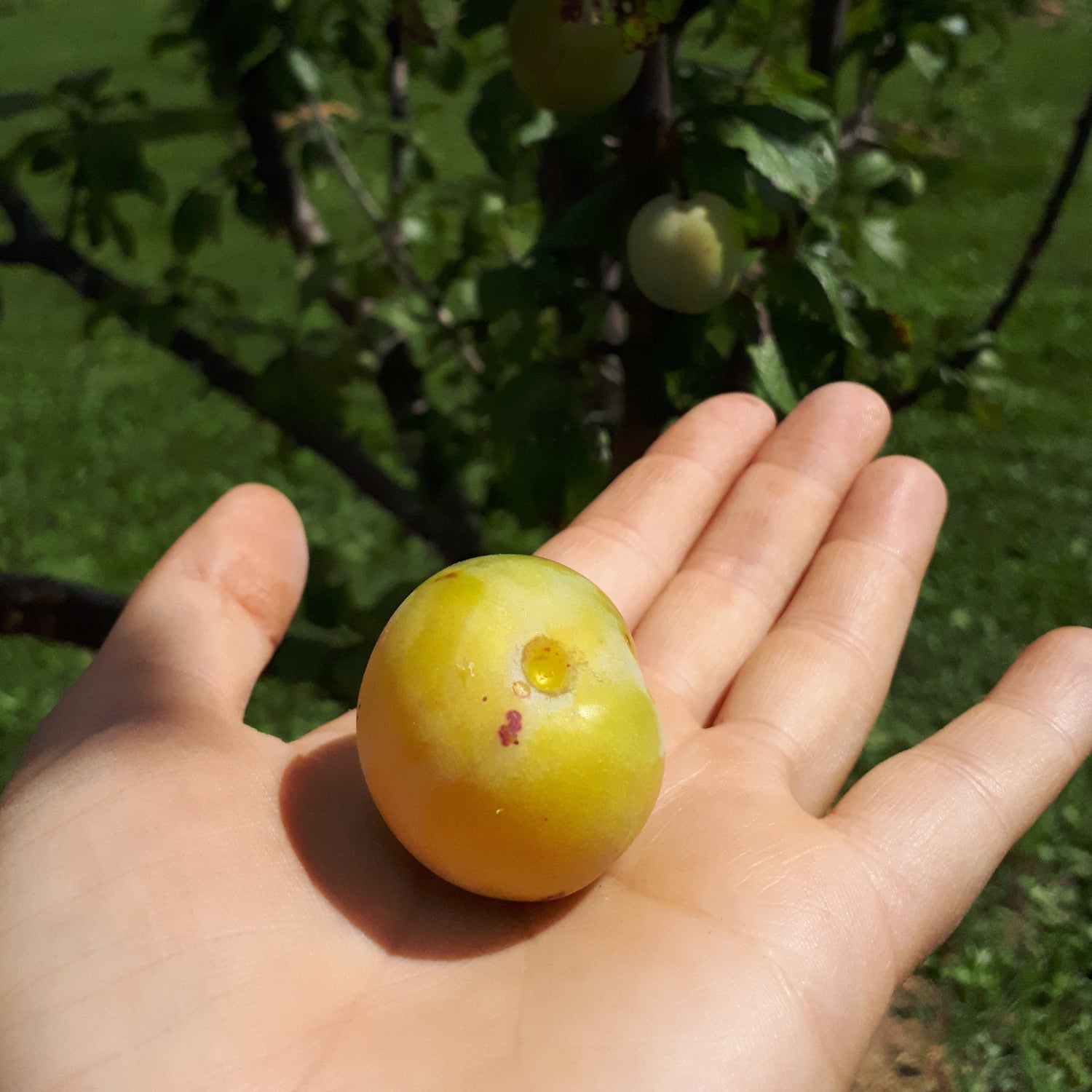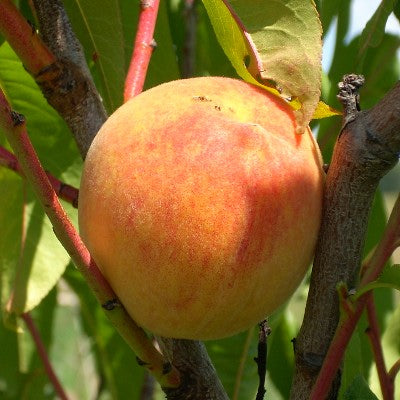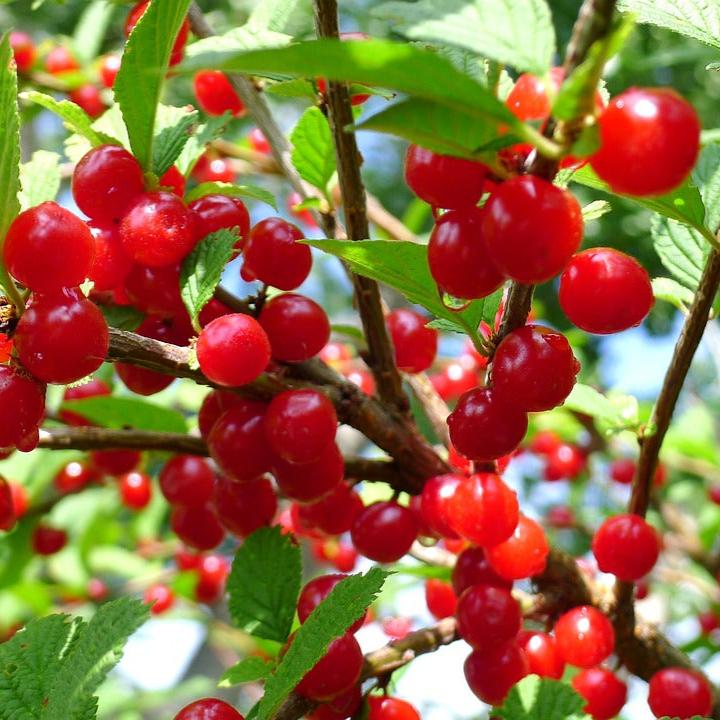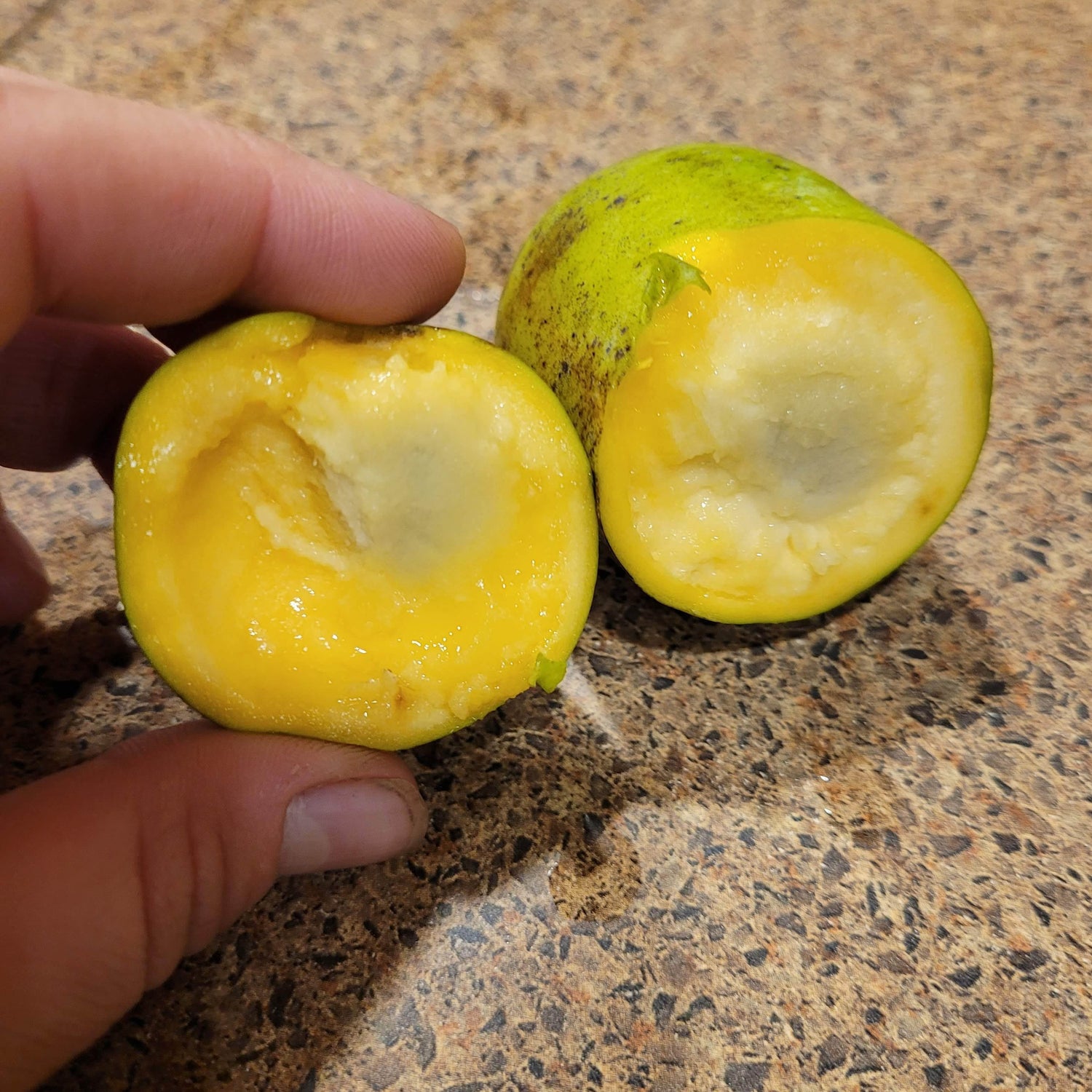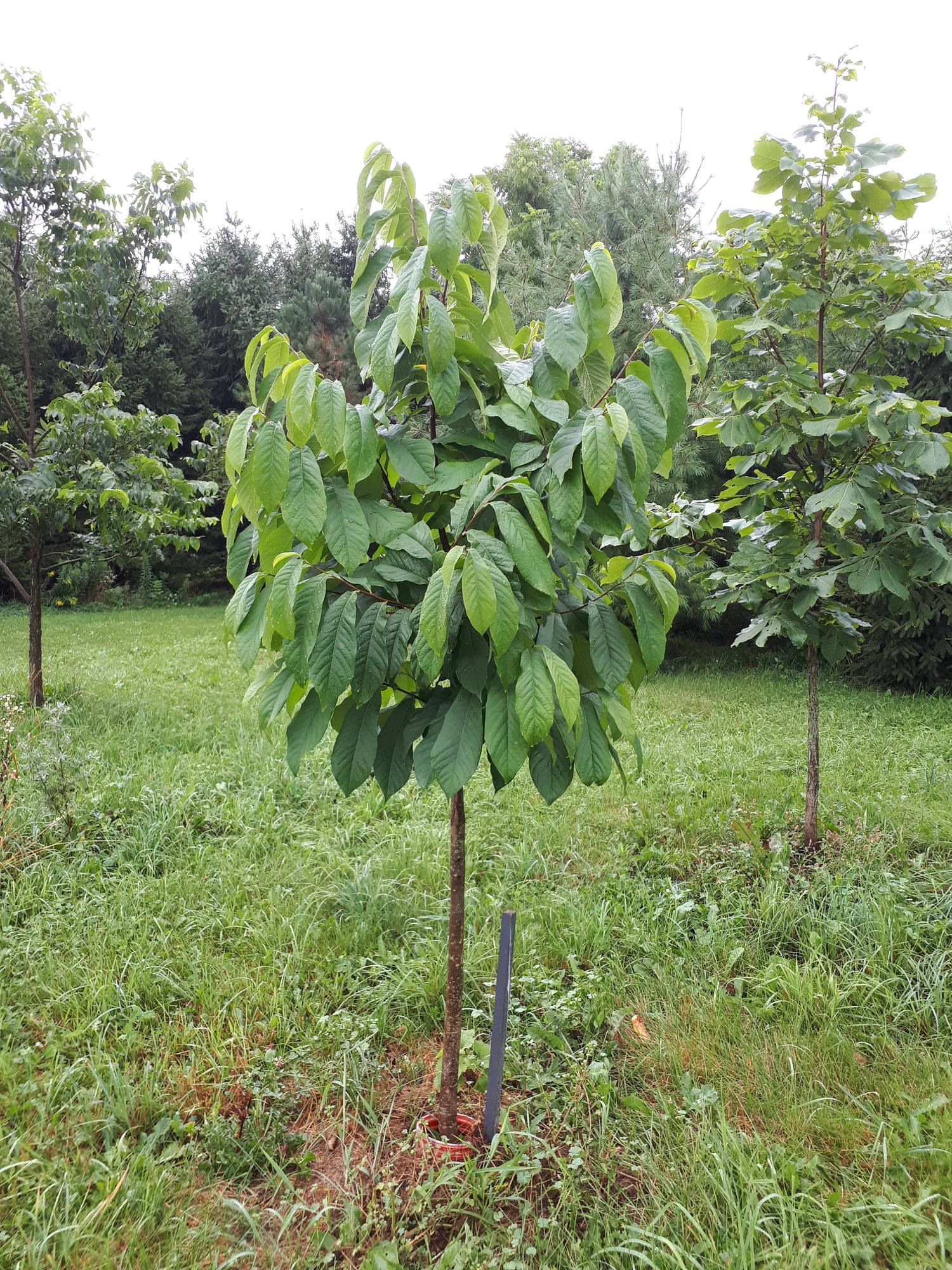Fruit Tree Seedlings (ungrafted)
Let's get a little more diverse! We are happy to see a growing interest in folks growing seedlings! They are an excellent way to increase diversity for both nature and your palate!
Seedling fruits may share some characteristics with their mother plant but there will be natural variation creating a unique plant with every seed, as unique as the differences between you and me. Remember when planting seedlings it's best to plant a few (2-3) for pollination. They typically take longer to come into bearing compared to grafted stock too.
Some species (eg. Prunus) stay fairly close to their mother tree, while others (eg. Malus) will be vary significantly.
Sort by:
30 products
30 products
Species: Prunus sp
History: These seedlings are grown from Late Italian plum seeds collected from our orchard. Late Italian is a traditional prune variety and is still commonly grown in Europe and North America today.
Why We Grow It: Seedling fruit trees are a great way to add some diversity and mystery to your garden or orchard! The parent variety, Late Italian, produces an all-purpose plum that is excellent for drying and great eaten fresh, canned, or incorporated into baking, desserts, or salads. For a more detailed description, see the Late Italian page on our website here.
Please Note: Since plums tend to stay true to type more than apples, these seedlings will likely bear a strong resemblance to their parent variety. However, any specific information listed on this page should be taken with a grain of salt as there may be some variation from the parent tree.
Species: Prunus sp
History: These seedlings are grown from Lombard plum seeds. The parent variety, Lombard, originated in the US in the 1800s.
Why We Grow It: Seedling fruit trees are a great way to add some diversity and mystery to your garden or orchard! Lombard is decent for fresh eating and good for canning and cooking.
Please Note: Since plums tend to stay true to type more than apples, these seedlings will likely bear a strong resemblance to their parent variety. However, any specific information listed on this page should be taken with a grain of salt as there may be some variation from the parent tree.
Species: Prunus cerasus
History: These Meteor seedlings are grown from seeds we've collected here at Silver Creek Nursery from our own trees! Meteor was introduced from the University of Minnesota in 1952.
Why We Grow It: Seedling fruit trees are a great way to add some diversity and mystery to your garden or orchard! The parent variety, Meteor, is a reliable, hardy variety that is great for pies. They naturally have a more compact growth habit. For a full description, see our Meteor page here.
Please Note: Since sour cherries tend to stay true to type more than apples, these seedlings will likely bear a strong resemblance to their parent variety. However, any specific information listed on this page should be taken with a grain of salt as there may be some variation from the parent tree.
Species: Prunus sp
History: These seedlings are grown from Mirabelle plum seeds collected from our orchard. Mirabelle has been grown in Europe for a long time and remains popular there, especially in France.
Why We Grow It: Seedling fruit trees are a great way to add some diversity and mystery to your garden or orchard! The parent variety, Mirabelle, is super sweet and flavourful. For a more detailed description, see the Mirabelle plum page on our website here.
Please Note: Since plums tend to stay true to type more than apples, these seedlings will likely bear a strong resemblance to their parent variety. However, any specific information listed on this page should be taken with a grain of salt as there may be some variation from the parent tree.
Available only for pick-up at nursery.
Species: Prunus persica
History: These peach seedlings are grown from peach seeds from the very trees we have in our orchards! The parents will be a mix of the Harrow Diamond, Redhaven, Reliance, Veteran, and seedling peaches from True Root Nursery.
Why We Grow It: Peach seedlings tend to stay fairly true to type so odds are you're going to get a pretty solid peach tree once they mature and it is hoped that growing them from seed here will make them a littler hardier! For those who prefer the certainty that comes with getting a named variety, these trees would also be great for grafting as rootstock, feeding wildlife, or planting along a fence line.
Species: Morus sp
History: Our mulberry seedlings are grown from local seed, but they most closely resemble the native red mulberry, Morus rubra, which are considered endangered in Canada. Indigenous peoples traditionally use the berries as a food source, the wood for smoking meat, and even made clothes from the inner bark of the young plants.
Why We Grow It: The delectably sweet berries are easily enjoyed by humans, livestock, and insects alike! Mulberries don't last very long once ripe so the best way to enjoy this summer treat is to grow them yourself!
Species: Prunus tomentosa
History: Nanking cherry is native to parts of China, Tibet, Korea, and Mongolia, and possibly northern India. It has long been cultivated in Asia for its tart fruit which is used in pickling, making wine, juice, and jam, and as an ornamental plant. It was introduced to Britain in 1870 and the US in 1892 where it is also planted in hedgerows as a windbreak. Breeding programs in the US, Canada, and Russia began in the 1920s to make the fruit more palatable fresh but by the 1940s interest had unfortunately waned.
Why We Grow It: Although more closely related to plums than cherries, Nanking cherry is great for a variety of uses including wine, juice, jam, and as an ornamental plant thanks to their attractive pinkish-white blossoms. Some enjoy eating the tart fruit fresh as well and they are also popular with birds and wildlife. Nanking cherries are hardy and tolerant of quite cold weather, making them an excellent option for most parts of Canada.
Species: Asimina triloba
History: Native to southern Ontario where it is considered a vulnerable species and the central United States, it is believed the range of these trees has shrunk with the extinction of megafauna that likely dispersed the seeds. These oddly tropical fruits have been cultivated by indigenous peoples and European colonizers alike, it is rumoured chilled pawpaw was George Washington's favourite dessert and Thomas Jefferson planted some at Monticello. Although popular among locals and with foragers, pawpaws have failed to achieve any kind of commercial success due to their poor keeping ability and oft difficult pollination.
Why We Grow It: The Pawpaw produces very unique fruit that has a distinct tropical banana/mango flavour and custard-like texture. As it oxidizes fairly quickly once cut open, it is best eaten fresh once fully ripe or made into sauces, ice cream, etc. You can bake and cook with pawpaw like you would with bananas but please take note that some people have reported extreme tummy troubles after consuming cooked pawpaws! Mouse made a no-bake pawpaw cheesecake (pictured on the left), you can find the recipe on our blog here! Pawpaws have a very slow growth habit and grow naturally as an under story tree, usually not reaching over 35 feet. We grow them from seed for increased hardiness compared to grafted stock.
Available only for pick-up at nursery.
Species: Prunus persica
History: These peach seedlings are grown from peach seeds from the very trees we have in our orchards! The parents will be a mix of the Harrow Diamond, Redhaven, Reliance, and Veteran.
Why We Grow It: Peach seedlings tend to stay fairly true to type so odds are you're going to get a pretty solid peach tree once they mature and it is hoped that growing them from seed here will make them a littler hardier! For those who prefer the certainty that comes with getting a named variety, these trees would also be great for grafting as rootstock, feeding wildlife, or planting along a fence line.
Available only for pick-up at nursery.
Species: Prunus sp
History: These seedlings are grown from plum seeds collected from our orchard and a Niagara orchard.
Why We Grow It: Since plums tend to stay true to type more than apples, these seedlings will likely bear a strong resemblance to their parents. For more information on each, check out the respective product pages for their parent varieties! If you prefer the certainty of named varieties, these seedlings would also be good for feeding wildlife or planting along fence lines.
Showing 20/30


